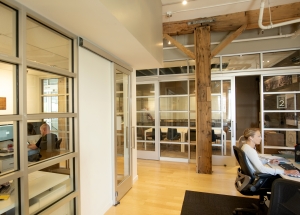6 Key Tips for Staying Productive During the Holiday Season
The last quarter of the year can be a hectic time for most of us. Office festivities, get-togethers with family and friends, travel plans, and shopping for your loved ones can take a toll on your productivity at work.
In a Fast Company article, Lisa Evans (the author) looks to Kory Kogon, a global productivity practice leader for Franklin Covey and coauthor. In order to survive the holiday season, Kogon suggests turning your attention inward to focus on what you need to be successful rather than giving into the demands of the holiday season.
Below are Kogon’s six tips, in the words of Evans, to staying productive during this bustling time of year:
1 Be Intentional
“Staying focused in the midst of the hectic holiday season can seem a daunting task, which is why Kogon recommends implementing the 30-10 promise. ‘Before the week starts, find 30 minutes to think about the things that need to get done in the coming week and prioritize that list,’ she says.
Schedule the most important items in your calendar, allowing the smaller tasks to fill in around them. Then, at the end of each workday, reconcile your calendar. ‘If something didn’t get done, move it to another place; reschedule it,’ says Kogon. Having a plan means you’ll be less likely to fall off track by seasonal distractions.”
2 Take A Break
“The holiday season is a great time of year to take a break. ‘Research shows that taking even a 10-minute break during the day increases productivity,’ says Kogon. Take advantage of the seasonal slowdown to give your brain a much-needed rest. You’ll return to work more energized and ready to be productive in the new year.”
3 Take A Personal Day for Errands
“Between get-togethers with family and friends and holiday shopping, you no doubt find your personal calendar encroaching on your work life during the holiday season. Rather than trying to cram personal errands into your workday, schedule a personal day to focus solely on those domestic and personal holiday preparations. This will allow you to focus 100% of your energy on work while you’re there.”
4 Don’t Be Afraid to Say No
“Is your holiday calendar jam-packed with invites to festive networking events? While you may be tempted to attend them all, Kogon says this can cause unnecessary stress and hinder your productivity.
The key to managing holiday invites is being intentional. Clarify what’s most important for you at the moment. For every invitation you receive, ask whether that event is going to help you to achieve that goal. Accepting an invitation because you don’t want to hurt someone’s feelings can have you burning the candle at both ends and falling behind in meeting your goals.”
5 Avoid Procrastination
“During the rest of the year, you may find you get an adrenaline rush from pushing deadlines, but Kogon says maintaining this mindset during the holiday season is dangerous. There’s a good reason many of us perform at our best while under pressure.
‘Procrastinating gives us a rush of dopamine–the body’s feel-good chemical,’ says Kogon. But during the holiday season, too many distractions and crises may come up, causing your stress levels to be elevated to an unnaturally high level. This can make the holiday season truly unbearable.”
6 Set Expectations
“Be realistic with yourself and others about how much you will be able to do, when you will be available, and when others can anticipate a response from you.
If you normally respond to emails promptly but are facing a particularly taxing day, you may want to set up an email notice to alert others that you may take a little while longer than normal to respond. This not only helps others know what to expect of you, but helps to ease your anxiety over a cluttered inbox.”
How a Virtual Office Membership Improves Your Professional Image
Are you starting a business?
If so, you probably don't have the funds or time yet to get your own office space and the amenities that come with it. A virtual office is a business address that is not the physical location of the business. It can be a valuable tool for businesses that want to project a professional image but do not need a traditional office space. Here are some benefits of a virtual office:
- Cost savings: One of the biggest benefits of a virtual office is the cost savings. Renting a traditional office space can be expensive, especially in prime locations. With a virtual office, you can have a professional business address without the overhead costs of an office lease.
- Flexibility: A virtual office allows for greater flexibility in terms of location. You can work from anywhere and still have a professional address to use for your business. This can be especially helpful for businesses that have employees or contractors who work remotely.

- Professional image: A virtual office can help your business project a professional image, even if you are working from home or a co-working space. Having a professional business address can be important for building credibility and trust with clients and partners.
- Mail and package handling: Many virtual office providers offer mail and package handling services, which can be convenient for businesses that do not have a traditional office space. These services can include mail forwarding and package receipt, so you can stay connected to your business even when you are not physically present at the virtual office.
- Meeting space: Some virtual office providers also offer access to meeting rooms or conference facilities, which can be useful for businesses that need a place to meet with clients or hold team meetings.
Work Hive offers a virtual office service, including mail handling and a discount on conference room use, should you need to come into the office and meet your clients. Visit our membership page to learn more!
Virtual Offices Offer Flexibility and Reduce Overhead Costs
A virtual office can be a useful tool for businesses that want to project a professional image and save on overhead costs, while still enjoying the flexibility of working remotely. However, it's important to consider whether a virtual office is the right fit for your business. Here are some things to consider when deciding if a virtual office is right for your business:
- Your business needs: The first thing to consider is whether a virtual office aligns with your business needs. Do you need a professional business address to build credibility and trust with clients and partners, or are you looking for a cost-effective alternative to a traditional office space?
- Your work style: It's also important to consider your work style and how a virtual office would fit into it. If you prefer to work from a traditional office setting or if you need a physical location for your business, a virtual office may not be the best fit. However, if you are comfortable working remotely and do not need a physical location for your business, a virtual office can be a great option.
- Your budget: Another important factor to consider is your budget. Virtual offices can be a cost-effective alternative to traditional office space, but it's important to consider whether the fees for a virtual office are within your budget.
- Your location: If you are targeting a specific geographic market, it may be important to have a physical location in that area. In this case, a virtual office may not be the best fit. However, if you are targeting a more general market or if your clients are located remotely, a virtual office can be a good option.
Overall, it's important to carefully consider your business needs and how a virtual office would fit into your work style and budget before deciding if it is the right fit for your business.
Work Hive offers a virtual office service, including mail handling and a discount on conference room use, should you need to come into the office and meet your clients. Visit our membership page to learn more!
Is a Virtual Office Right For You? 4 Points to Consider
A virtual office can be a useful tool for businesses that want to project a professional image and save on overhead costs, while still enjoying the flexibility of working remotely. However, it's important to consider whether a virtual office is the right fit for your business. Here are some things to consider when deciding if a virtual office is right for your business:
- Your business needs: The first thing to consider is whether a virtual office aligns with your business needs. Do you need a professional business address to build credibility and trust with clients and partners, or are you looking for a cost-effective alternative to a traditional office space?
- Your work style: It's also important to consider your work style and how a virtual office would fit into it. If you prefer to work from a traditional office setting or if you need a physical location for your business, a virtual office may not be the best fit. However, if you are comfortable working remotely and do not need a physical location for your business, a virtual office can be a great option.
- Your budget: Another important factor to consider is your budget. Virtual offices can be a cost-effective alternative to traditional office space, but it's important to consider whether the fees for a virtual office are within your budget.
- Your location: If you are targeting a specific geographic market, it may be important to have a physical location in that area. In this case, a virtual office may not be the best fit. However, if you are targeting a more general market or if your clients are located remotely, a virtual office can be a good option.
Overall, it's important to carefully consider your business needs and how a virtual office would fit into your work style and budget before deciding if it is the right fit for your business.
Work Hive offers a virtual office service, including mail handling and a discount on conference room use, should you need to come into the office and meet your clients. Visit our membership page to learn more!
The Benefits of a Virtual Office Membership
Are you starting a business?
If so, you probably don't have the funds or time yet to get your own office space and the amenities that come with it. A virtual office is a business address that is not the physical location of the business. It can be a valuable tool for businesses that want to project a professional image but do not need a traditional office space. Here are some benefits of a virtual office:
- Cost savings: One of the biggest benefits of a virtual office is the cost savings. Renting a traditional office space can be expensive, especially in prime locations. With a virtual office, you can have a professional business address without the overhead costs of an office lease.
- Flexibility: A virtual office allows for greater flexibility in terms of location. You can work from anywhere and still have a professional address to use for your business. This can be especially helpful for businesses that have employees or contractors who work remotely.
- Professional image: A virtual office can help your business project a professional image, even if you are working from home or a co-working space. Having a professional business address can be important for building credibility and trust with clients and partners.
- Mail and package handling: Many virtual office providers offer mail and package handling services, which can be convenient for businesses that do not have a traditional office space. These services can include mail forwarding and package receipt, so you can stay connected to your business even when you are not physically present at the virtual office.
- Meeting space: Some virtual office providers also offer access to meeting rooms or conference facilities, which can be useful for businesses that need a place to meet with clients or hold team meetings.
Work Hive offers a virtual office service, including mail handling and a discount on conference room use, should you need to come into the office and meet your clients. Visit our membership page to learn more!
6 Tips for Staying Productive During the Holiday Season
The end of the year can be a hectic time for most of us. Office festivities, get-togethers with family and friends, travel plans, and shopping for your loved ones can take a toll on your productivity at work.
In a Fast Company article, Lisa Evans (the author) looks to Kory Kogon, a global productivity practice leader for Franklin Covey and coauthor. In order to survive the holiday season, Kogon suggests turning your attention inward to focus on what you need to be successful rather than giving into the demands of the holiday season’s demands.
Below are Kogon’s six tips, in the words of Evans, to staying productive during this busy time:
Be Intentional
“Staying focused in the midst of the hectic holiday season can seem a daunting task, which is why Kogon recommends implementing the 30-10 promise. ‘Before the week starts, find 30 minutes to think about the things that need to get done in the coming week and prioritize that list,’ she says.
Schedule the most important items in your calendar, allowing the smaller tasks to fill in around them. Then, at the end of each workday, reconcile your calendar. ‘If something didn’t get done, move it to another place; reschedule it,’ says Kogon. Having a plan means you’ll be less likely to fall off track by seasonal distractions.”
Take A Break
“The holiday season is a great time of year to take a break. ‘Research shows that taking even a 10-minute break during the day increases productivity,’ says Kogon. Take advantage of the seasonal slowdown to give your brain a much-needed rest. You’ll return to work more energized and ready to be productive in the new year.”
Take A Personal Day for Errands
“Between get-togethers with family and friends and holiday shopping, you no doubt find your personal calendar encroaching on your work life during the holiday season. Rather than trying to cram personal errands into your workday, schedule a personal day to focus solely on those domestic and personal holiday preparations. This will allow you to focus 100% of your energy on work while you’re there.”
Don’t Be Afraid to Say No
“Is your holiday calendar jam-packed with invites to festive networking events? While you may be tempted to attend them all, Kogon says this can cause unnecessary stress and hinder your productivity.
The key to managing holiday invites is being intentional. Clarify what’s most important for you at the moment. For every invitation you receive, ask whether that event is going to help you to achieve that goal. Accepting an invitation because you don’t want to hurt someone’s feelings can have you burning the candle at both ends and falling behind in meeting your goals.”
Avoid Procrastination
“During the rest of the year, you may find you get an adrenaline rush from pushing deadlines, but Kogon says maintaining this mindset during the holiday season is dangerous. There’s a good reason many of us perform at our best while under pressure.
‘Procrastinating gives us a rush of dopamine–the body’s feel-good chemical,’ says Kogon. But during the holiday season, too many distractions and crises may come up, causing your stress levels to be elevated to an unnaturally high level. This can make the holiday season truly unbearable.”
Set Expectations
“Be realistic with yourself and others about how much you will be able to do, when you will be available, and when others can anticipate a response from you.
If you normally respond to emails promptly but are facing a particularly taxing day, you may want to set up an email notice to alert others that you may take a little while longer than normal to respond. This not only helps others know what to expect of you, but helps to ease your anxiety over a cluttered inbox.”
How to Pick and Set Your 2020 Goals
The new year is in just a couple of days, and it is important to begin reflecting on your 2020 and what you want to accomplish in the new year.
Laura Winter, with Medium, offers some ways to help you reflect on the past year and set your goals for the new year that align with your values:
Reflect on Your Accomplishments
“Think back to all of the things you accomplished during the year, anything you appreciate, and some place where you made great strides. Can you improve on any of these items? Are there goals you can set to keep these accomplishments at the forefront?”
Reflect on Your Setbacks
“It’s important to remember that we can learn more from our mistakes than our successes, but that doesn’t make us a failure. Where are places that you maybe didn’t accomplish what you wanted? What changes can you make in those areas to better your chances for success?”
Reflect on Your Habits
“Think about the habits you adopted that you are thankful for. Maybe you stopped drinking or smoking. Maybe you picked up an exercise habit. Think about how you can keep these going into the new year, or even challenge yourself to go the next step.
Even think about the habits you developed that you aren’t quite proud of. Maybe you started staying up later and suffered in the morning. Maybe you picked up one too many streaming services and can’t seem to get away from the TV. See if there are adjustments you can make to your habits as the new year begins.”
Set a Focus
“Now that you’ve reflected, set your focus on the things that you believe will make the biggest change in your life. Have a clear definition of what this change will be and be laser-focused. Make it the center of your attention.
For example, I am going to spend 2020 focused on the overarching goal of writing. That means any tasks that interfere with my one goal will inevitably be put in the back of my queue. My priority is making writing happen, and aligning my life to support that goal.”
Set an Intention
“Now that you have something to focus on, do a deep dive into it. Plan out how you are going to make that change happen. Schedule it into your day. Declare your why, or the big reason you want that change to happen.
Think back to my writing goal, which I now set my intentions. That plan, broken apart, includes changing some behaviors (like hitting snooze or not carrying a notebook around) as well as setting intentions and schedules during my day specifically around writing. It also includes projects such as book writing and editing as well as blogging and marketing more. I’ve even created an editorial calendar (part of my starting 2020 resolutions now) to give me a head start once January 1 arrives.”
Set a Structure
“I touched briefly on this above, but create a structure for which your goal can flourish. That might mean scheduling it into your day, creating a routine around it, setting reminders, changing your environment, or joining a community of support. All of these things can create accountability, either to yourself or to others. While you can have rewards around your goal, hopefully your time and dedication will reap benefits for you as well.
Sometimes we can’t always rely on motivation to keep us going. There are going to be days where we want to do anything but our goal. Obviously, healthy breaks can help us come back refreshed and ready to attack our goals, but creating a routine or ritual around your goal can be huge toward progress.”
Reflect on Your Intentions
“Just one review at the end of the year is not enough. Build monthly or weekly reviews into your schedule. Determine what is working and what isn’t working and make the necessary adjustments. Regular check-ins can help you stick to your new goals and habits and help you succeed in the long run.”
Benefits of a Virtual Office Membership
Are you starting a business?
If so, you probably don't have the funds or time yet to get your own office space and the amenities that come with it.
Many new business owners and startups need flexibility in the beginning stages. Coworking spaces offer an affordable place to grow your business. But if you are not ready to commit to a reserved desk or office space, but need the amenities a shared office offers—consider a virtual office membership.
What business support does a virtual office membership provide you?
1. Business Mailing Address
Here at Work Hive, this is the main benefit many of our virtual office members are looking for. Virtual office memberships offer a professional mailing address in a desirable, downtown zip code. Virtual office members gain a physical business location without committing to a lease. This can also ensure your business isn't connected with your home address as you register for a business license.
2. Weekly Mail Forwarding
Virtual office members can choose to have any mail received for their business forwarded weekly to them, wherever that may be. Scan to email is also an option if you prefer getting your mail more quickly.
3. Access to Conference Rooms
When you become a Work Hive virtual office member, you can access our conference rooms for client meetings any time you need. Virtual office members get discounted access to our conference rooms and discounted day passes as well. You can meet with your clients or employees in a professional setting, only paying for the office when you need it!
4. Quick and Easy Set Up
Whether you live near or far from Salt Lake City, Work Hive can easily set up a virtual office membership for you. If you live in a different state, it’s not a problem because everything can be completed online. It takes just a few minutes to sign up online. Once you've signed up, the Work Hive team will reach out with a short form for you to fill out. The form will need to be notarized, or signed in person at Work Hive. After that, you’re set up and ready to go!
5. Cost-Effective
Virtual office memberships save you from renting a commercial space, paying utilities, and buying furniture and equipment. With all the money you will save by choosing a virtual office membership, you can invest it back into your business and its future expansion.
If a virtual office membership sounds like a good fit for your business, visit Work Hive’s membership page to sign up today!
Preventing Burnout: How To Stay Connected When You Disconnect
We have all heard of burnout.
Many of us have unfortunately experienced it first hand.
In the fast paced, sleepless world in which we currently live, more and more pressure is being put on employees to dissolve their ideas of "workday hours" and work until a project gets finished.
The absence of physical boundaries leads to the absence of mental boundaries, which can still lead to working overtime and burning out from high self-expectations.
The positive side of the modern work culture shift is that it promotes more flexibility for employees to enjoy exercise and other healthy activities before, during, and after work, allowing them to explore or maintain a sense of what uniquely fulfills them and helps them sustain productivity when they choose to be in the office.
Because the structure and culture of work has changed, so has the cause of burnout, and so has the ways that are best to respond to that burnout.
An article in Forbes mentions the idea of "digital burnout" and how our devices make it difficult for us to stop working due to such easy access to email at all times.
The common suggestion to deal with the technological overwhelm and work burnout is to disconnect.
The one problem? People do not know how to recharge.
We spend so much time staring at a screen or responding to a text that if we actually turn off the devices and sit down in the deathly quiet, our brains are not conditioned to know what to do next.
The author suggests a new solution of connecting in a different, healthier way instead of completely disconnecting and dropping into solitude for a while.
The author describes this new kind of connection in a few ways:
- Connecting with yourself - Know what actually feels healthy for you. If you recently tried yoga, do some yoga. Even for ten minutes in your living room. The key is to keep it simple so that the activity you choose is still ultimately relaxing.
- Connect with others - Again, keep it simple. Set up a coffee date in advance with a friend to just sit and chat. Or invite a friend to walk with you at the dog park. Hand-write a note and send it to a family member, the old-fashioned way.
- Connect with the world - Think about something that scares you or represents a total break of your status quo. Take a road trip, try a random restaurant, read a hardcover book.
Pro tip: Take these three categories and make lists of ideas uniquely for the things that feel healthy for you. That way, when the time comes that you feel the burn coming on, you have a pre-set menu of things that will help you recharge in a healthier, thoughtful way.
The Five-Minute Trick That Will Make Your Meetings More Productive
Meetings can be unproductive and time-consuming.
What if you could find a way to have such a productive meeting, that you could end it early? It’s seems like a radical idea, but it’s doable.
Terra Bohlmann, a business strategist and creator of The Business Map Method, has a three-step, five-minute system to make your next meeting more productive.
Step One — Reflect and Close Your Mental Loop (2 minutes)
Use this time to write up meeting notes, decisions made, and the next steps that need to happen. You can reference these notes during your meeting. Bohlmann states:
“Avoid the impulse to make a quick phone call, check email, or solicit input from someone else. Don’t fall for these traps because there’s nothing worse than being late to your next meeting.”
Step Two — Prepare For Your Next Meeting By Defining Your Goal (2 minutes)
“Review any previous notes and decide on the top goal you want to accomplish during your next meeting. If you are leading the meeting, jot down a simple agenda that you’ll share with others when you kick-off the meeting and your top goal,” advises Bohlmann.
When you lead a meeting, try and be as specific as possible with what you want to complete by the end of the meeting. By being specific with your goals for the meeting, the attendees will remain focused and productive.
Step Three — Give Your Brain a Well-Deserved Break (1 minute)
Before heading into the meeting and after you’ve prepared, take a mental break. Everyone is different, but Bohlmann suggests standing, stretching, and taking deep breathes. By taking this break, you’ll be able to go into you next meeting with a clear head.
“Don’t feel pressure to get to your meeting early to make small talk. Be on time, be fully present for the group, and end the meeting early,” states Bohlmann.
Try this system the next time you’re leading a meeting, and see if it makes a difference!










